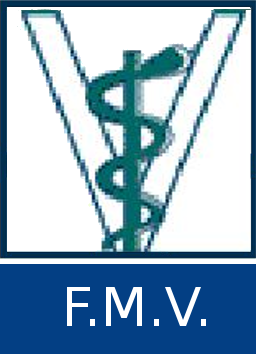Production of a chimeric strain of Cyprinid herpesvirus 3 expressing the I73R protein of African swine fever virus fused to a peroxidase of soybean - a major step for the study of Zα domains
Ferhad, Cédrik 
Promoteur(s) :
Vanderplasschen, Alain 
Date de soutenance : 27-jui-2024 • URL permanente : http://hdl.handle.net/2268.2/20654
Détails
| Titre : | Production of a chimeric strain of Cyprinid herpesvirus 3 expressing the I73R protein of African swine fever virus fused to a peroxidase of soybean - a major step for the study of Zα domains |
| Titre traduit : | [fr] Production d'une souche chimérique du Cyprinid herpesvirus 3 exprimant la protéine I73R du virus de la peste porcine africaine fusionnée à une peroxydase du soja - une étape majeure pour l'étude des domaines Zα |
| Auteur : | Ferhad, Cédrik 
|
| Date de soutenance : | 27-jui-2024 |
| Promoteur(s) : | Vanderplasschen, Alain 
|
| Membre(s) du jury : | Machiels, Bénédicte 
Dewals, Benjamin 
Gillet, Laurent 
Gourzonnes, Claire 
|
| Langue : | Anglais |
| Nombre de pages : | 43 |
| Mots-clés : | [en] Zα domain [en] Cyprinid herpesvirus 3 [en] interactome [en] proximity labelling assay |
| Discipline(s) : | Sciences du vivant > Médecine vétérinaire & santé animale |
| Institution(s) : | Université de Liège, Liège, Belgique |
| Diplôme : | Master en médecine vétérinaire |
| Faculté : | Mémoires de la Faculté de Médecine Vétérinaire |
Résumé
[fr] Zα domains are short amino acid (aa) sequences which bind to left-handed dsDNA (Z-DNA) or dsRNA (Z-RNA). To date, Zα domains have been identified in only three cellular proteins and three viral proteins. The ORF112 of CyHV-3 encodes a protein containing a Zα
domain. Recently, the host laboratory demonstrated that the Zα domain of ORF112 (the C-terminal part of ORF112) is essential and sufficient for viral replication in cell culture. ORF112 was shown to localize in cytosolic ribonucleotide complexes during infection. This observation makes CyHV-3 a unique model to study the biological functions of Zα domains. However, limited information are available to elaborate hypotheses on the function of ORF112 Zα domain during CyHV-3 infection. Unravelling the interactants (protein and RNA) of ORF112 Zα represent crucial information to build these hypotheses.
A very elegant approach to study the interactome (both at the protein and RNA level) within living cells relies on proximity labelling assays. The most used method relies on the expression of the protein of interest fused to the peroxidase APEX2. This enzyme has been cloned from soybean. Proximity labeling using APEX2 relies on the biotinylation of molecules surrounding of the fusion protein following induction of its enzymatic activity by hydrogen peroxide. The biotinylated molecules (protein and RNA) can then be purified using streptavidin-coated beads (which have a strong affinity for biotin). Furthermore, the use of alternative substrates to biotin, such as diaminobenzidine, allows APEX2 to be utilized as a contrast agent for electron microscopy.
The aim of this master thesis was to produce a recombinant strain of CyHV-3 expressing the Zα domain of ASFV I73R fused at its N-terminal end to APEX2. To achieve this goal, we used a strategy combining prokaryotic recombination technologies and homologous directed recombination in eukaryotic cells. First, a recombination cassette consisting of a sequence encoding the APEX2-I73R fusion protein flanked by 500 base pair (bp) regions upstream and downstream of the ORF112 locus of CyHV-3 was generated within a pGEMT vector through DNA assembly and cloning. Subsequently, the recombinant virus was generated by co-transfection of CCB cells by this recombination cassette and a BAC clone of the CyHV-3 genome deleted for ORF112. This approach led to successful produced a recombinant CyHV-3 strain expressing the APEX2-I73R fusion protein, allowing us to make the following observations. The subcellular localization of APEX2-I73R Zα within infected cells is comparable to of the wildtype I73R protein. Biotinylation reaction induced by H2O2 treatment was demonstrated within live infected cells expressing APEX2 fused to I73R. Finally, given that the CyHV-3 strain expressing I73R Zα exhibits a strong attenuated phenotype, we examined the potential in vitro impact of the addition of APEX2 to this phenotype. We did not observe any significant differences related to in vitro growth between the strain expressing the fusion protein compared to the strain expressing I73R alone.
Fichier(s)
Document(s)

 FERHAD_Cédrik_TFE_FMV_juin2024_définitif.pdf
FERHAD_Cédrik_TFE_FMV_juin2024_définitif.pdf
Description:
Taille: 599.03 kB
Format: Adobe PDF

 Erratum_FERHAD_Cédrik_TFE_FMV_juin2024_définitif.pdf
Erratum_FERHAD_Cédrik_TFE_FMV_juin2024_définitif.pdf
Description: -
Taille: 345.16 kB
Format: Adobe PDF
Citer ce mémoire
L'Université de Liège ne garantit pas la qualité scientifique de ces travaux d'étudiants ni l'exactitude de l'ensemble des informations qu'ils contiennent.


 Master Thesis Online
Master Thesis Online




